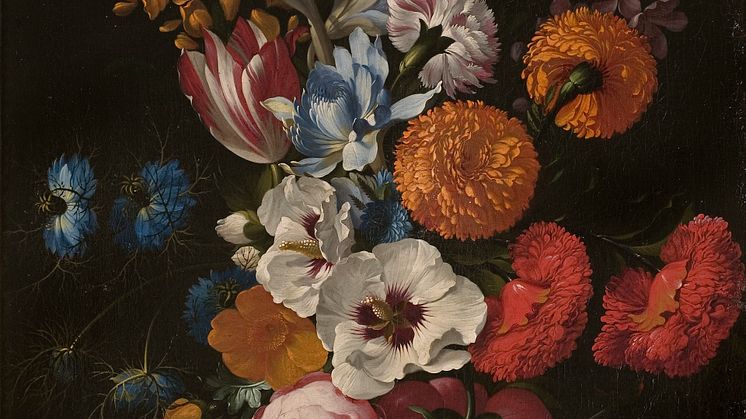
Press release -
The exhibition The Garden opens at Nationalmuseum 23 February
The Garden – Six Centuries of Art and Nature takes the form of a grand tour showing how gardens have been portrayed in art. The exhibition includes more than 300 paintings, drawings, applied art and sculpture. Artists on display include Watteau, Boucher, Oudry, Le Nôtre, Monet and Carl Larsson and, from contemporary times, Peter Frie and Emma Helle.
Garden art has always involved living materials: nature itself and the changing seasons. This makes it a dynamic artform, transforming, dying and renewing in line with the natural cycle. A garden, whether artful or utilitarian, is not the same thing as nature. It has always been consciously designed in accordance with particular ideas and plans. Ultimately, the garden can be seen as a desire to recreate Paradise. The square, geometric quarters of a Renaissance garden with a fountain in the middle were one expression of this desire. Likewise, baroque pleasure gardens could be seen as a way of restoring what was lost in the fall of man. On the drawing board, God’s creation would be resurrected with the aid of compasses and rulers. Geometry and optics would then translate the architect’s vision into practice.
A complete reappraisal occurred in the 18th century, when humanity suddenly realised that it could be a danger to nature. The dark forests and rugged mountains were no longer considered threatening. Virgin nature, yet to be exploited by mankind, was the new ideal influencing landscape architecture. Eventually, though, the toytown scale and artificial character were perceived as so comical that art and nature went their separate ways after 1800 – a distinction that has endured. However, many of the questions raised throughout history about mankind’s relationship with art and nature have persisted and recurred. This is clearly apparent in contemporary art, where both Paradise and the threat to nature are ever present themes.
The relationship between art and nature is central to the exhibition. The introductory section, devoted to the myth of Paradise, will occupy a large gallery of its own, lined with cabinets containing the various natural elements as reflected in the artworks. Similarly, the artificial garden will form the focus of the second large gallery, covering the period from the Renaissance to the present day. This gallery will be surrounded by smaller exhibition rooms featuring individual design forms ranging from caves to ruins. At the centre of all this, there will be a section covering the human presence in the garden.
As an example of contemporary interpretations, the artist Peter Frie has been invited to take part in the exhibition. Known as a painter of dreamlike landscapes, Frie has created a series of bronze sculptures of trees, having progressed from painting to a three-dimensional format. Trees of various sizes will be presented as an installation in dialogue with the historical material on landscape and gardens. Emma Helle, another contemporary artist invited to take part, works in ceramics and draws inspiration from sources such as classical mythology. Her decorative and colourful, almost baroque works take us on a fanciful journey through the history of myth and literature. Helle is also creating two new works especially for Nationalmuseum’s exhibition as a commentary on the theme of Paradise.
The exhibition includes more than 300 paintings, drawings, applied art and sculpture. Artists on display include Watteau, Boucher, Oudry, Le Nôtre, Monet and Carl Larsson and, from contemporary times, Peter Frie and Emma Helle. Most of the exhibits comes from Nationalmuseum’s own collections, but the exhibition also includes important pieces on loan from Musée d'Orsay, Musée du Grand Siècle, Châteaux de Versailles et de Trianon, Musée des Arts Décoratifs, Gothenburg Museum of Art, the National Library of Sweden, Royal Swedish Academy of Fine Arts, the Swedish National Archives, the Royal Palace Archives and Gustavianum. A catalogue containing a series of in-depth articles will be published to coincide with the exhibition.
The Garden – Six Centuries of Art and Nature is on show on the upper level of Nationalmuseum from 23 February 2023–7 January 2024. The exhibition’s curator is Magnus Olausson, Nationalmuseum.
Media enquiries
Hanna Tottmar, Head of Press, press@nationalmuseum.se, +46 8 5195 4400
Categories
Nationalmuseum is Sweden’s museum of art and design. The collections comprise some 700 000 objects, including paintings, sculpture, drawings and graphic art from the 16th century up to the beginning of the 20th century and the collection of applied art and design up to the present day. Nationalmuseum’s responsibility is to preserve and make art accessible and provide knowledge. The museum was appointed the Swedish Museum of the Year 2022.

